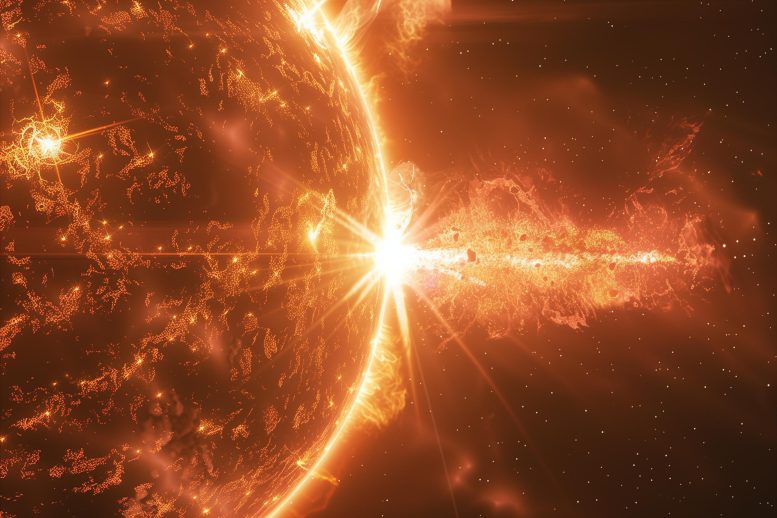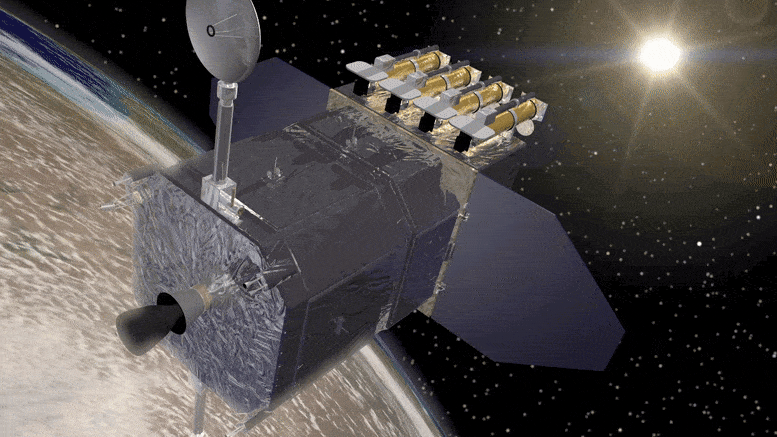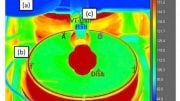
NASA recorded 82 solar flares between May 3 and 9, 2024, showcasing intense solar activity that can affect space technology and astronauts, despite Earth’s protective atmosphere. Credit: SciTechDaily.com
From May 3 through May 9, 2024, NASA’s Solar Dynamics Observatory observed 82 notable solar flares. The flares came mainly from two active regions on the Sun called AR 13663 and AR 13664. This video highlights all flares classified at M5 or higher with nine categorized as X-class solar flares.
A solar flare is an intense burst of radiation, or light, on the Sun. Flares are our solar system’s most powerful explosive events. Light only takes about 8 minutes to travel from the Sun to Earth, so that’s how long it would take the energy from a flare to reach our planet.
Solar flares are rated into different classes based on their strength, or energy output, and the effect a flare will have on Earth depends on what class it is (B, C, M, and X classes, with X being the most intense). Earth’s atmosphere absorbs most of the Sun’s intense radiation, so flares are not directly harmful to humans on the ground. However, the radiation from a flare can be harmful to astronauts outside of Earth’s atmosphere, and it can affect the technology we rely on.
Stronger solar flares — those rated class M5 or above — can have impacts on technology that depends on Earth’s ionosphere (our electrically charged upper atmosphere), like high-frequency radio used for navigation and GPS.
To see how such space weather may affect Earth, please visit NOAA’s Space Weather Prediction Center, the U.S. government’s official source for space weather forecasts, watches, warnings, and alerts. NASA works as a research arm of the nation’s space weather effort. NASA observes the Sun and our space environment constantly with a fleet of spacecraft that study everything from the Sun’s activity to the solar atmosphere, and to the particles and magnetic fields in the space surrounding Earth.

This animation of the Solar Dynamics Observatory shows it above the earth as it faces toward the Sun. SDO is designed to help us understand the Sun’s influence on Earth and Near-Earth space by studying the solar atmosphere on small scales of space and time and in many wavelengths simultaneously. Credit: NASA/Goddard Space Flight Center Conceptual Image Lab
NASA’s Solar Dynamics Observatory (SDO) is a mission primarily aimed at understanding the Sun’s influence on Earth and near-Earth space by observing the solar atmosphere in multiple wavelengths. Launched in February 2010, SDO is a part of NASA’s Living With a Star (LWS) program, which intends to develop the scientific understanding necessary to address those aspects of the connected Sun-Earth system that directly affect life and society.
SDO’s observations provide high-resolution images of the Sun in 13 different wavelengths every 10 seconds. This allows for detailed monitoring of solar activity, including solar flares, which are sudden, intense bursts of radiation coming from the release of magnetic energy associated with sunspots. Solar flares are significant because they can release immense amounts of energy that heat up the solar atmosphere, increase solar luminosity, and produce enhanced radiation that can have profound effects on Earth. This includes potential impacts on satellite operations, communications systems, and even power grids, especially during intense flares.
SDO’s data is crucial for understanding the dynamics of solar flares and their development. It helps scientists improve their models of the solar atmosphere and forecast space weather events with greater accuracy. By providing a continuous stream of data, SDO plays a vital role in our ability to predict and mitigate the effects of solar activity on modern technological systems.









Be the first to comment on "Rapid-Fire Solar Flares Unleashed: NASA Witnesses 82 Intense Flares This Week [Video]"